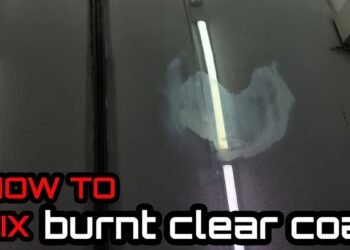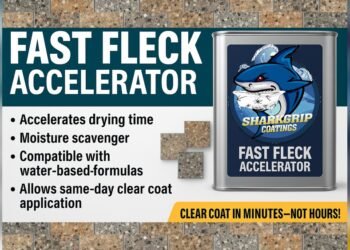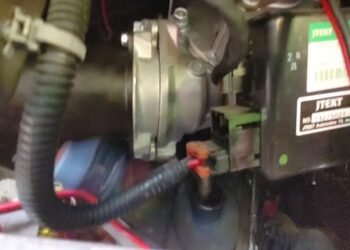Are you struggling to remove Plasti Dip from your car, rims, or trim pieces? You might have heard that Goo Gone could be the magic solution, but does it really work?
If you want a fast, easy, and safe way to get rid of that rubbery coating without damaging your surface, you’re in the right place. You’ll discover how Goo Gone interacts with Plasti Dip, step-by-step tips to make the removal process smoother, and important safety advice to protect your vehicle and yourself.
Keep reading to find out if Goo Gone is the answer to your Plasti Dip removal challenges!
Goo Gone And Plasti Dip
Goo Gone is a popular product for removing sticky residues. Many wonder if it can remove Plasti Dip effectively. Plasti Dip is a flexible, rubberized coating used on cars and other surfaces. Removing it can be tricky, especially without damaging the base material. Goo Gone offers a chemical solution that breaks down adhesives and sticky substances.
This section explores how Goo Gone interacts with Plasti Dip. It explains how the product works and its effectiveness on various surfaces.
How Goo Gone Works
Goo Gone contains solvents that dissolve sticky materials. It softens Plasti Dip, turning it into a gummy substance. This makes it easier to scrape or wipe away. Applying Goo Gone and letting it soak helps break the bond. After a few minutes, the Plasti Dip becomes less adhesive. This process reduces the effort needed to remove the coating.
Effectiveness On Different Surfaces
Goo Gone works well on hard and smooth surfaces. It is safe for trim pieces, metal, and glass. Using a nylon scraper after applying Goo Gone prevents damage. On porous or delicate surfaces, test a small area first. Some plastics or painted surfaces may react differently. Goo Gone may not remove thick Plasti Dip layers easily. Multiple applications might be necessary for full removal.
Peeling Plasti Dip
Peeling Plasti Dip is often the easiest way to remove this flexible coating. It comes off in sheets if applied correctly and fully dried. Patience and care make the process smoother and protect the surface beneath.
Finding The Starting Edge
Start by locating a loose corner or edge of the Plasti Dip. Use your fingernail or a plastic tool to lift it gently. Avoid sharp objects that can scratch the surface under the dip. Once you have a good grip, pull the dip slowly and steadily.
Tips For Successful Peeling
Peel the Plasti Dip at a low angle to prevent tearing. Work in sections to keep control over the removal. If the dip is stubborn, warm it slightly with sunlight or a hairdryer. This softens the material and makes peeling easier. Clean the surface afterward to remove any residue left behind.
Using Solvents
Using solvents can help remove Plasti Dip, especially thin layers or leftover residue. Solvents work by breaking down the Plasti Dip, making it easier to wipe or wash away. Choosing the right solvent and applying it carefully improves the removal process. Safety and testing on surfaces ensure no damage occurs during cleaning.
Types Of Solvents For Plasti Dip
Goo Gone is a popular solvent for removing Plasti Dip residue. It softens the material without harsh chemicals. WD-40 also works well by loosening the Plasti Dip for easy wiping. Rubbing alcohol or acetone can dissolve thin coats but may be stronger on surfaces. Use products designed for delicate finishes to avoid damage.
Safety Precautions
Work in a well-ventilated area to avoid inhaling fumes. Wear gloves to protect your skin from chemicals. Avoid open flames or sparks near solvents as many are flammable. Keep solvents away from children and pets. Follow product instructions carefully to reduce risks and ensure safe use.
Testing On Surfaces
Always test solvents on a small, hidden area first. This step checks for any discoloration or damage. Wait a few minutes after applying to see the effect. If the surface shows no harm, proceed with the full cleaning. Testing prevents costly mistakes on visible parts of your item.

Credit: googone.com
Pressure Washing Method
The pressure washing method offers a powerful way to remove Plasti Dip. It uses high-pressure water to blast away the softened coating. This method works best after applying a solvent that breaks down the Plasti Dip. The water then removes the loosened material without damaging the surface underneath. Proper preparation and technique are essential for safe and effective removal.
Preparing The Surface
Start by cleaning the area to remove dirt and debris. This prevents scratching during pressure washing. Apply a Plasti Dip solvent or Goo Gone evenly over the dip. Let it soak for several minutes to soften the coating. Test a small area first to ensure no damage. Cover nearby parts that could be harmed by water or solvent.
Best Practices For Pressure Washing
Use a pressure washer with moderate pressure, around 1200 to 1900 PSI. Keep the nozzle at least 12 inches from the surface. Hold the spray at a 45-degree angle to avoid damage. Move the wand steadily to remove all residue. Avoid holding the spray in one spot too long. After washing, dry the surface with a clean cloth to prevent water spots.
Removing Thin Or Residual Plasti Dip
Removing thin or residual Plasti Dip can be tricky. Unlike thick layers that peel off easily, thin coats may leave sticky or gummy patches behind. These leftovers require careful treatment to avoid damaging the underlying surface. Choosing the right method helps restore your item without hassle. Below are some effective ways to tackle thin or residual Plasti Dip.
Specialized Products
Specialized products are designed to dissolve Plasti Dip without harsh effects. They liquify the thin layers, making cleanup easier. Use these products according to the instructions on the label. After application, the softened Plasti Dip can be wiped or rinsed away. These products work well on delicate surfaces and reduce scraping.
Using Wd-40
WD-40 is a handy option for removing leftover Plasti Dip. Spray it generously on the affected area and let it soak for a few minutes. The solvent breaks down the residue, turning it soft and easy to wipe off. Use a microfiber cloth to gently remove the softened material. This method is simple and widely available.
When To Use Chemical Dissolvers
Chemical dissolvers are useful for stubborn Plasti Dip residues that resist other methods. They work quickly but require caution. Always use these dissolvers in a well-ventilated space to avoid inhaling fumes. Test the product on a small hidden spot first to check for surface damage. Follow all safety guidelines to protect your skin and eyes.
Tools And Techniques
Removing Plasti Dip with Goo Gone requires the right tools and careful techniques. Proper tools make the process easier and protect the surface underneath. Using gentle tools avoids scratches and damage. Applying Goo Gone carefully helps break down the Plasti Dip without harsh scrubbing. The right approach saves time and keeps your items safe.
Scrapers And Cloths
Use plastic or nylon scrapers to lift Plasti Dip gently. Metal scrapers can scratch or damage surfaces. Start scraping at an edge and work slowly. After scraping, wipe the area with a microfiber cloth. This cloth helps remove sticky residue without spreading it. Avoid rough cloths that might scratch or rub the surface too hard.
Avoiding Surface Damage
Test Goo Gone on a small hidden spot first. Wait a few minutes and check for any discoloration or damage. Work in a well-ventilated area to avoid fumes. Do not use too much force when scraping. Let Goo Gone soak in and soften the Plasti Dip before removal. Patience reduces the risk of harming the paint or plastic below.
Common Challenges
Removing Plasti Dip with Goo Gone can be tricky. Several challenges appear during the process. Understanding these issues helps in planning the removal better. Some problems relate to the thickness of the Plasti Dip layer. Others come from Plasti Dip that won’t peel off easily. These common challenges can slow down your work and require extra care.
Handling Thick Coats
Thick layers of Plasti Dip are harder to remove. Goo Gone may take longer to break down these heavy coats. Applying the product in small sections works best. Let Goo Gone soak well to soften the material. Use a gentle scraper to lift the softened dip. Patience is key when dealing with thick coats. Rushing might damage the surface below the Plasti Dip.
Dealing With Unpeelable Plasti Dip
Some Plasti Dip refuses to peel off, even after applying Goo Gone. This happens if the dip bonds strongly to the surface. In such cases, Goo Gone helps by softening the dip into a gummy residue. Use a microfiber cloth to wipe off the softened remains. Avoid harsh scrubbing that can scratch the surface. Sometimes, multiple applications of Goo Gone are necessary for better results.

Credit: googone.com
Safety Tips
Using Goo Gone to remove Plasti Dip requires careful handling. Safety should always come first. The chemicals in Goo Gone can be strong and harmful without proper precautions. Follow these safety tips to protect yourself while working on your project.
Ventilation Importance
Always use Goo Gone in a well-ventilated area. Open windows and doors to allow fresh air inside. Avoid breathing in fumes for long periods. Poor ventilation can cause dizziness and headaches. Using a fan can help move air quickly. Never use Goo Gone in a closed room or garage without airflow.
Protecting Your Skin And Eyes
Wear gloves to keep Goo Gone off your skin. The chemicals can cause irritation and redness. Use safety goggles to protect your eyes from splashes. If Goo Gone touches your skin, wash it off immediately with soap and water. Avoid rubbing your eyes or face while working with the product. Keep a clean cloth nearby to wipe spills safely.

Credit: www.youtube.com
Frequently Asked Questions
Can I Use Goo Gone To Remove Plasti Dip?
Goo Gone can remove Plasti Dip by softening it into a gummy residue. Apply generously, let it soak, then scrape gently. Finish by wiping with a microfiber cloth. Test first to avoid surface damage and ensure safe use in a well-ventilated area.
What Will Dissolve Plasti Dip?
Plasti Dip dissolves with solvents like Goo Gone, WD-40, or specialized dip removers. Apply, let soak, then wipe or peel off.
Will Goof Off Remove Plasti Dip?
Goof Off can remove Plasti Dip by softening it. Apply generously, let it soak, then scrape and wipe residue clean. Use gloves and ventilate the area.
Is Goo Gone Safe On Car Plastic?
Goo Gone is generally safe on car plastic but test it on a small area first. Avoid prolonged contact to prevent damage. Use gently and wipe thoroughly after application.
Can Goo Gone Effectively Remove Plasti Dip From Surfaces?
Goo Gone can break down Plasti Dip, making it easier to peel or wipe off with some effort.
Conclusion
Goo Gone can help remove Plasti Dip, especially thin layers. Spray it on, let it soak, then gently scrape off the softened dip. Use a microfiber cloth to clean any residue left behind. Always test Goo Gone on a small area first to protect the surface.
For thicker coats, peeling or specialized removers may work better. Proper ventilation and patience make the process easier. This simple method keeps your surfaces safe while clearing unwanted Plasti Dip effectively.

















